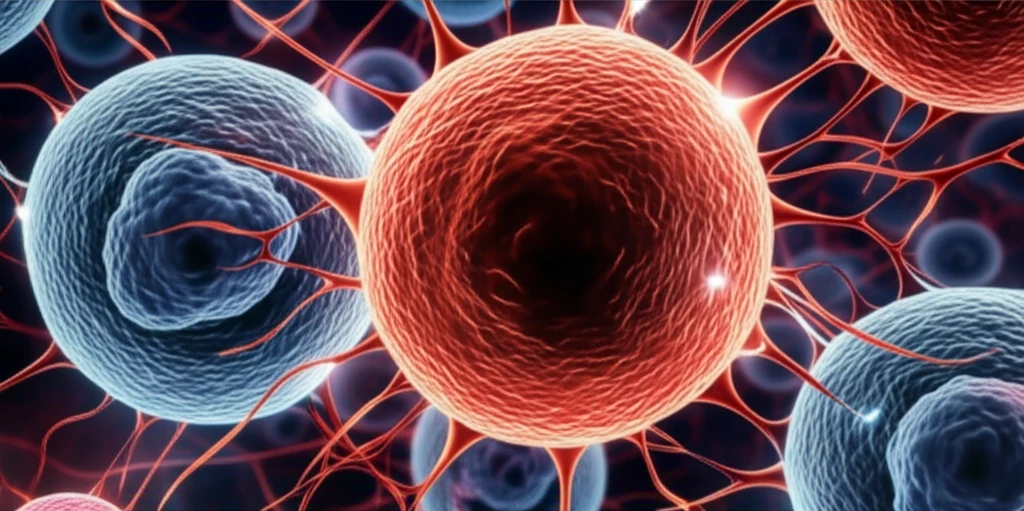
Decoding EndMT: How Cells Change Shape and Drive Cardiovascular Disease
"Unraveling the Mysteries of Endothelial-to-Mesenchymal Transition: From Embryonic Development to Heart Disease and Beyond"
The human body is a marvel of interconnected systems, with the cardiovascular system acting as a critical network delivering oxygen and nutrients to every cell. At the heart of this system are endothelial cells (ECs), which line blood vessels and ensure smooth function. However, when these cells undergo a dramatic transformation, known as Endothelial-to-Mesenchymal Transition (EndMT), it can set the stage for serious cardiovascular problems.
EndMT is a process where ECs lose their normal characteristics and take on properties of mesenchymal cells, which are typically involved in tissue repair and development. This cellular shape-shifting isn't inherently bad; it plays a crucial role during embryonic development. But when EndMT is activated inappropriately in adults, it contributes to diseases like vascular calcification, pulmonary hypertension, and organ fibrosis.
This article dives into the latest research on EndMT, exploring the signaling pathways that trigger this transformation and its implications for cardiovascular health. We'll break down the complex science into understandable terms, revealing how understanding EndMT could lead to new strategies for preventing and treating heart disease.
The Key Pathways That Trigger EndMT

EndMT doesn't happen spontaneously. It's triggered by a complex interplay of signaling pathways, many of which are borrowed from the body's developmental playbook. These pathways act like a cascade, where one signal activates another, ultimately leading to changes in gene expression and cellular behavior. Some of the key players include:
- Wnt Signaling: This pathway plays a critical role in embryonic development and tissue maintenance. When Wnt signaling is activated in ECs, it can promote EndMT.
- Inflammation: Chronic inflammation is a major driver of many diseases, including cardiovascular disease. Inflammatory cytokines, like TNF-α and IL-1β, can trigger EndMT in ECs.
- Notch Signaling: This pathway is involved in cell-cell communication and regulates various developmental processes. Notch signaling can also induce EndMT, depending on the context.
- Hypoxia: Low oxygen levels can trigger EndMT, particularly in the context of pulmonary hypertension.
Targeting EndMT: A New Frontier in Cardiovascular Medicine
Understanding the mechanisms that drive EndMT opens new avenues for therapeutic intervention. By targeting specific signaling pathways or molecules involved in the process, researchers hope to develop drugs that can prevent or reverse EndMT and, ultimately, treat cardiovascular diseases.
While still in its early stages, research on EndMT holds immense promise for improving the lives of millions affected by heart disease and related conditions. As scientists continue to unravel the complexities of this cellular transformation, we can expect to see innovative new therapies emerge that target the root causes of cardiovascular disease.
The future of cardiovascular medicine may lie in our ability to control how cells change shape and adapt to their environment. By understanding and targeting EndMT, we can pave the way for more effective treatments and a healthier future for all.
